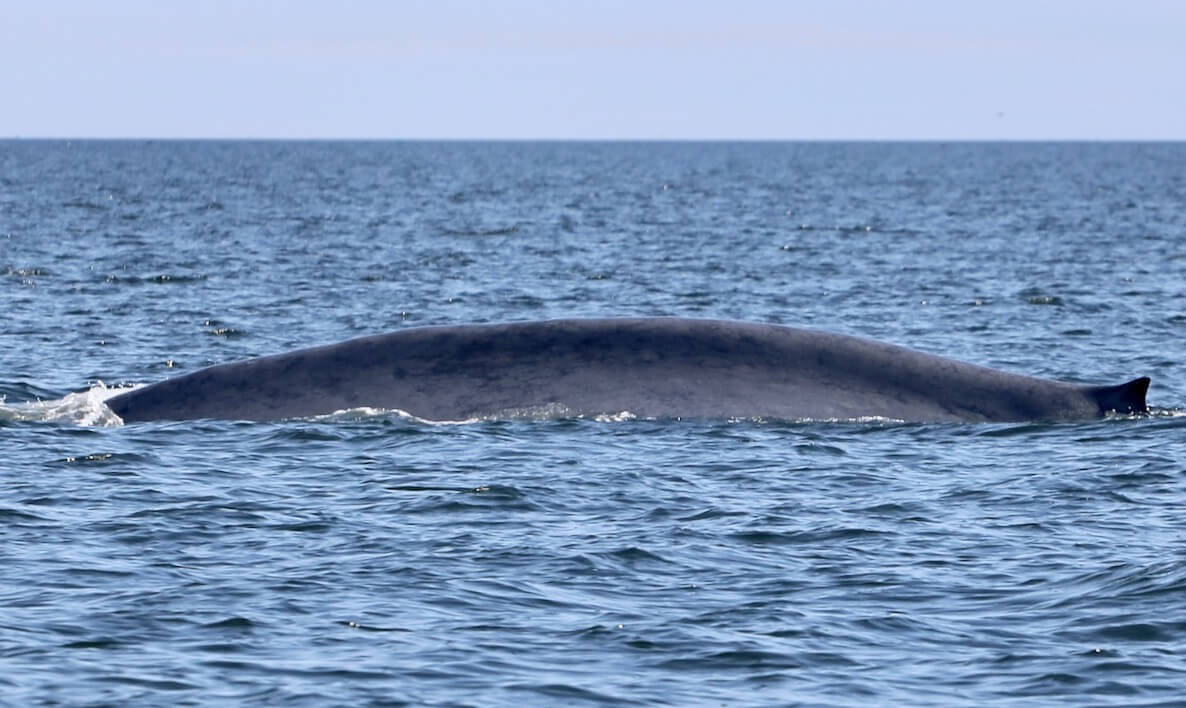New observations of blue whales have been made in the waters of the Arabian Sea and in the northwestern corner of the West Indian Ocean. A population of this species was already known in the Indian Ocean, but the discovery of a new song indicates that there are at least two different populations of blue whales inhabiting these waters. The discovery comes from a research team collecting data on a local population of humpback whales that has been threatened for the past 20 years. The discovery of a new blue whale song helps bolster their conservation efforts.
Blue whales usually follow their prey and travel the high seas, which makes them difficult to track. By documenting their presence and their movements by means of acoustic detection, scientists seek to acquire a better understanding of the distinct habits of these cetaceans. Since each population uses the territory differently, the preservation of this potentially new population will be better assured by applying the appropriate measures.
The different-sounding population was identified when its slow, howling songs were first recorded in 2017 off the coasts of Madagascar.
The sounds recorded and studied by the team of Salvatore Cerchio, director of the cetacean program at the African Aquatic Conservation Fund, helped determine the area where these mysterious cetaceans live.
The frequencies of the songs specific to this species are rather low. In an interview with The New York Times, Salvatore Cerchio mentions that “It was quite remarkable to find a whale song in [these] data that was completely unique, never before reported.” He adds, “It’s like hearing different songs within a genre – Stevie Ray Vaughan versus B.B. King. “It’s all blues, but you know the different styles.”
Meticulous observation by spectrogram
Having had access to very little visual evidence of the presence of blue whales, the scientists collected acoustic data that allowed them to compare the phrases detected by hydrophones with previously recorded songs of the whales living in this region. An exhaustive investigation was thus carried out to match the songs to the right species. What a surprise for Cerchio and his team, then, to identify a song that had never before been documented!
The blue whale is the species that comes closest to matching the characteristics of the sounds studied. A frequency of between 15 and 50 Hz, the repetitions and the length of the phrases ranging from 10 to 30 seconds all suggest the aforementioned species.
Researchers are continuing their quest to validate these results by studying genetic samples. A daunting task given the blue whales’ habit of swimming far offshore.
If the discovery of a new population of blue whales is so significant, it is because human activity has an impact on their safety. The animals’ movements in coastal waters expose them to a number of hazards: entanglement in fishing gear, ship strikes, disturbance from the fossil fuel industries, coastal development, etc. Each population is subject to different challenges, so we must take into account their particularities in order to properly protect them.
New species: keep your eyes peeled and your ears open!
An unknown species of beaked whale was spotted off the Pacific coast of Mexico in 2020. Biologists make new discoveries by studying sites where known cetaceans are already present. In the Gulf of Mexico, an unidentified lineage of Bryde’s whale has also been discovered, this time through genetic analysis. This type of study is making exciting breakthroughs that are making it easier to identify new species.
In the St. Lawrence, studying marine mammal sounds is one of the research techniques utilized by scientists. The lives of the blue whale and fin whale populations that frequent the Gulf and Estuary are still shrouded in mystery, which is why further analysis of their calls and songs could change the way we protect these species.







